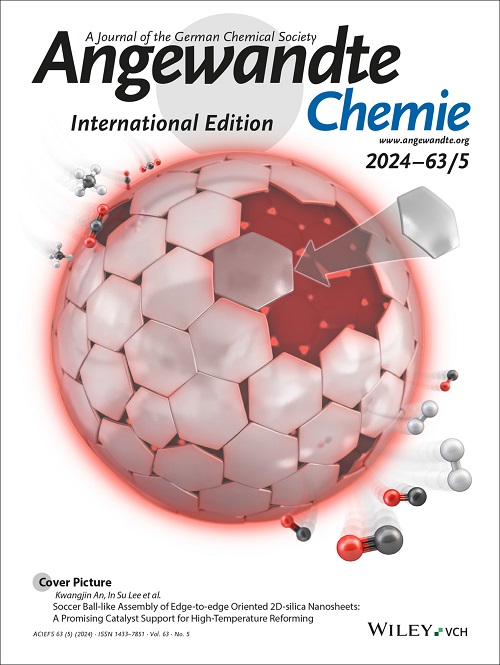Crosslinking Profiling of Molecular Glue Degrader‐Induced E3 Ligase Interactome to Expand Target Space
IF 16.1
1区 化学
Q1 CHEMISTRY, MULTIDISCIPLINARY
引用次数: 0
Abstract
Molecular glue (MG) degraders, small molecules with significant therapeutic potential for targeting undruggable proteins, are emerging as new modality in drug discovery. Profiling the E3 ligase interactome induced by MG degraders provides insights into their mechanism of action and identifies clinically relevant neo‐substrates for degradation, thereby offering new therapeutic opportunities. However, established methods face significant challenges in comprehensive and accurate profiling of MG degrader‐induced E3 ligase interactome. Herein, we introduce the concept of globally crosslinking profiling of the MG degrader‐induced E3 ligase interactome in living cells, achieved by integrating genetic code expansion technology with mass spectrometry‐based proteomics. Our approach presents an efficient and robust strategy for identifying neo‐substrates recruited to cereblon E3 ligase by the known degraders CC‐885 and DKY709, offering valuable insights for clinical evaluation and significantly expanding their target space. Moreover, we developed two novel MG degraders with potent anti‐proliferative effects on cancer cells, and application of our method identified neo‐substrates, revealing a previously unrecognized target landscape and advancing our understanding of E3 ligase–neo‐substrate interactions. Overall, our study provides a powerful tool for neo‐substrate identification and expanding target space of E3 ligase, opening new opportunities for developing next‐generation MG degraders to address the clinical challenge of undruggable targets.求助全文
约1分钟内获得全文
求助全文
来源期刊
CiteScore
26.60
自引率
6.60%
发文量
3549
审稿时长
1.5 months
期刊介绍:
Angewandte Chemie, a journal of the German Chemical Society (GDCh), maintains a leading position among scholarly journals in general chemistry with an impressive Impact Factor of 16.6 (2022 Journal Citation Reports, Clarivate, 2023). Published weekly in a reader-friendly format, it features new articles almost every day. Established in 1887, Angewandte Chemie is a prominent chemistry journal, offering a dynamic blend of Review-type articles, Highlights, Communications, and Research Articles on a weekly basis, making it unique in the field.

 求助内容:
求助内容: 应助结果提醒方式:
应助结果提醒方式:


